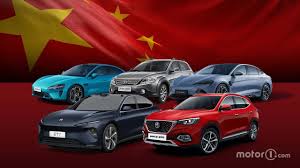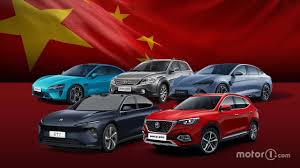
In a bold pivot away from saturated Western markets, leading Chinese automobile manufacturers are intensifying their push into Africa, enticed by the continent’s rapid urbanisation, burgeoning middle class and untapped automotive demand. With trade tensions and hefty import tariffs dampening prospects in the United States and Europe, China’s auto giants see Africa’s underdeveloped but promising markets as a strategic lifeline. By leveraging competitive pricing, establishing local partnerships and rolling out affordable electric and hybrid models, these firms aim to cement their presence on the continent and reshape Africa’s automotive landscape.
Market Opportunity Beckons
Africa’s auto market remains one of the world’s most lightly penetrated, with car ownership rates in many nations still measured in single digits per thousand inhabitants. Yet demographic trends—from rapid population growth to expanding urban centres—suggest that demand could swell dramatically over the next decade. Industry forecasts estimate that annual vehicle sales in Sub-Saharan Africa could climb to more than four million units by 2030, up from roughly one million today. Recognising this potential, Chinese manufacturers such as BYD, Chery, Great Wall Motor and SAIC Motor are deploying aggressive strategies to capture early market share before global competitors can solidify their footholds.
Central to Chinese automakers’ strategy is price leadership. By utilising cost-efficient production techniques and benefitting from economies of scale at home, they can offer new-energy vehicles—covering traditional hybrids, plug-in hybrids and battery electric models—at price points below those of legacy brands. In South Africa, for instance, Chery undercut established rivals by debuting a compact hybrid crossover at under 350,000 rand (approximately \$20,000), drawing attention from budget-conscious consumers. BYD, meanwhile, has introduced an all-electric sedan in Kenya at a price roughly 25% lower than comparable European imports. Such affordability addresses one of the continent’s chief barriers to automotive adoption while signalling to local buyers that Chinese cars deliver value without sacrificing modern features.
Beyond exports, automakers are exploring local assembly operations to sidestep import duties and qualify for government incentives. In Nigeria, a Sino-Nigerian joint venture backed by Great Wall Motor recently inaugurated a semi-knockdown (SKD) plant capable of assembling up to 50,000 vehicles annually. Officials in Egypt have signed memorandums of understanding with SAIC Motor to develop a fully-fledged assembly line by 2026, backed by concessional financing from Chinese state banks. These projects not only cut headline costs but also foster technology transfer, generate jobs and curry favour with host governments eager to bolster domestic industrial capacity.
Plug-In Hybrids as Transitional Technology
Given Africa’s uneven electrification and limited charging infrastructure, plug-in hybrid vehicles (PHEVs) have emerged as a pragmatic bridge between internal-combustion engines and full electric mobility. Executives at Omoda & Jaecoo, Chery’s premium spin-off, emphasise that PHEVs offer consumers electric driving for urban commutes while retaining the flexibility of petrol engines on longer journeys. In Morocco and South Africa, PHEV adoption grew by over 60% last year, driven in part by incentives such as reduced licensing fees and preferential parking permits. By frontloading hybrid models, Chinese brands hope to cultivate consumer familiarity with new-energy technology ahead of broader EV rollouts.
China’s broader Belt and Road Initiative (BRI) provides a diplomatic and financial underpinning to its automakers’ African ambitions. Infrastructure loans for roads, ports and power grids often come with stipulations favouring Chinese suppliers, thereby creating synergies between state-backed development projects and corporate expansion. In Kenya, the expansion of the Mombasa–Nairobi Standard Gauge Railway—financed largely by Chinese banks—has opened new logistics corridors that reduce transit times for imported vehicles. Angola’s oil-backed loans have funded highway upgrades that automakers cite as critical for extending after-sales networks into hinterland regions.
Expanding Service and Charging Networks
Recognising that reliable after-sales support is vital to winning consumer trust, Chinese carmakers are investing in dealership and service networks across Africa. BYD has committed to opening 30 service centres in East and Southern Africa by 2027, while Great Wall Motor recently launched a mobile-service fleet in Ghana to reach rural customers. Simultaneously, automakers collaborate with local utilities and private energy firms to pilot fast-charging stations in capital cities, with plans to scale across major highways. Early trials in Nairobi and Johannesburg indicate that charging times of 30 minutes for an 80% battery refill are feasible, reducing range anxiety among prospective buyers.
To resonate with African drivers, manufacturers are adapting vehicle designs and specifications. Reinforced suspensions, dust-resistant air filters and higher ground clearance address the continent’s varied road conditions. Interior layouts often include additional USB ports and infotainment systems calibrated for local languages and streaming services. In Senegal, Changan unveiled a rugged pickup truck with dual fuel (diesel and compressed natural gas) capability to accommodate regions with erratic petrol supplies. Such market-specific tweaks help Chinese brands differentiate themselves from generic imports and align more closely with consumer needs.
Competitive Response from Global Brands
Western and Japanese automakers are taking notice of China’s inroads. Volkswagen has announced plans to extend production at its plant in South Africa to include more SUV models aimed at emerging-market tastes. Toyota is exploring low-cost local production in East Africa to defend its market share. However, the traditional players often struggle to match China’s aggressive pricing without compromising margins. As a result, they face growing pressure to partner with local assemblers or form joint ventures—strategies that, until recently, were largely absent from their Africa playbooks.
Despite the promise, Chinese automakers must navigate a complex regulatory landscape. Import tariffs vary widely—ranging from 10% in some East African Community countries to over 30% in West African nations—requiring flexible market-entry models. Political shifts can also upend incentives: Nigeria’s recent administration has hinted at reducing tax holidays for foreign manufacturers, prompting automakers to accelerate investment decisions. Moreover, concerns about data privacy and government-backed financing sometimes spark local debates over economic sovereignty, demanding careful diplomatic engagement.
Chinese brands face lingering skepticism regarding build quality, spare-part availability and resale values. To counteract these perceptions, firms are offering extended warranties—up to seven years or 150,000 kilometres in some markets—and stocking critical components in regional hubs. Marketing campaigns highlight safety ratings from independent agencies to bolster consumer confidence. Early customer feedback in Zambia and Botswana suggests that transparent maintenance plans and bundled insurance packages can significantly sway purchasing decisions, laying the groundwork for more stable market growth.
Vision for a Pan-African Mobility Ecosystem
Ultimately, Chinese automakers envisage a pan-African mobility ecosystem where vehicles, charging infrastructure, financing and aftermarket services form an integrated network. Plans are underway to launch captive finance arms in Kenya and South Africa to provide affordable loans and leasing options, addressing one of the biggest hurdles to vehicle acquisition. Digital platforms—leveraging WeChat-style apps—aim to streamline everything from showroom browsing to service scheduling, adapting models proven successful in China’s vast domestic market.
As the global auto industry confronts shifting trade dynamics, Chinese manufacturers are betting that Africa’s automotive uptake will accelerate faster than in any other region. By marrying competitive pricing with localised production, hybrid-first rollouts and strategic partnerships under the Belt and Road umbrella, they hope to leapfrog competitors and capture enduring loyalty. Whether Africa’s roads will soon be dominated by Chinese marques remains to be seen, but one thing is certain: the continent has emerged as focal ground zero in China’s quest for new automotive frontiers.
(Source:www.investing.com)
Market Opportunity Beckons
Africa’s auto market remains one of the world’s most lightly penetrated, with car ownership rates in many nations still measured in single digits per thousand inhabitants. Yet demographic trends—from rapid population growth to expanding urban centres—suggest that demand could swell dramatically over the next decade. Industry forecasts estimate that annual vehicle sales in Sub-Saharan Africa could climb to more than four million units by 2030, up from roughly one million today. Recognising this potential, Chinese manufacturers such as BYD, Chery, Great Wall Motor and SAIC Motor are deploying aggressive strategies to capture early market share before global competitors can solidify their footholds.
Central to Chinese automakers’ strategy is price leadership. By utilising cost-efficient production techniques and benefitting from economies of scale at home, they can offer new-energy vehicles—covering traditional hybrids, plug-in hybrids and battery electric models—at price points below those of legacy brands. In South Africa, for instance, Chery undercut established rivals by debuting a compact hybrid crossover at under 350,000 rand (approximately \$20,000), drawing attention from budget-conscious consumers. BYD, meanwhile, has introduced an all-electric sedan in Kenya at a price roughly 25% lower than comparable European imports. Such affordability addresses one of the continent’s chief barriers to automotive adoption while signalling to local buyers that Chinese cars deliver value without sacrificing modern features.
Beyond exports, automakers are exploring local assembly operations to sidestep import duties and qualify for government incentives. In Nigeria, a Sino-Nigerian joint venture backed by Great Wall Motor recently inaugurated a semi-knockdown (SKD) plant capable of assembling up to 50,000 vehicles annually. Officials in Egypt have signed memorandums of understanding with SAIC Motor to develop a fully-fledged assembly line by 2026, backed by concessional financing from Chinese state banks. These projects not only cut headline costs but also foster technology transfer, generate jobs and curry favour with host governments eager to bolster domestic industrial capacity.
Plug-In Hybrids as Transitional Technology
Given Africa’s uneven electrification and limited charging infrastructure, plug-in hybrid vehicles (PHEVs) have emerged as a pragmatic bridge between internal-combustion engines and full electric mobility. Executives at Omoda & Jaecoo, Chery’s premium spin-off, emphasise that PHEVs offer consumers electric driving for urban commutes while retaining the flexibility of petrol engines on longer journeys. In Morocco and South Africa, PHEV adoption grew by over 60% last year, driven in part by incentives such as reduced licensing fees and preferential parking permits. By frontloading hybrid models, Chinese brands hope to cultivate consumer familiarity with new-energy technology ahead of broader EV rollouts.
China’s broader Belt and Road Initiative (BRI) provides a diplomatic and financial underpinning to its automakers’ African ambitions. Infrastructure loans for roads, ports and power grids often come with stipulations favouring Chinese suppliers, thereby creating synergies between state-backed development projects and corporate expansion. In Kenya, the expansion of the Mombasa–Nairobi Standard Gauge Railway—financed largely by Chinese banks—has opened new logistics corridors that reduce transit times for imported vehicles. Angola’s oil-backed loans have funded highway upgrades that automakers cite as critical for extending after-sales networks into hinterland regions.
Expanding Service and Charging Networks
Recognising that reliable after-sales support is vital to winning consumer trust, Chinese carmakers are investing in dealership and service networks across Africa. BYD has committed to opening 30 service centres in East and Southern Africa by 2027, while Great Wall Motor recently launched a mobile-service fleet in Ghana to reach rural customers. Simultaneously, automakers collaborate with local utilities and private energy firms to pilot fast-charging stations in capital cities, with plans to scale across major highways. Early trials in Nairobi and Johannesburg indicate that charging times of 30 minutes for an 80% battery refill are feasible, reducing range anxiety among prospective buyers.
To resonate with African drivers, manufacturers are adapting vehicle designs and specifications. Reinforced suspensions, dust-resistant air filters and higher ground clearance address the continent’s varied road conditions. Interior layouts often include additional USB ports and infotainment systems calibrated for local languages and streaming services. In Senegal, Changan unveiled a rugged pickup truck with dual fuel (diesel and compressed natural gas) capability to accommodate regions with erratic petrol supplies. Such market-specific tweaks help Chinese brands differentiate themselves from generic imports and align more closely with consumer needs.
Competitive Response from Global Brands
Western and Japanese automakers are taking notice of China’s inroads. Volkswagen has announced plans to extend production at its plant in South Africa to include more SUV models aimed at emerging-market tastes. Toyota is exploring low-cost local production in East Africa to defend its market share. However, the traditional players often struggle to match China’s aggressive pricing without compromising margins. As a result, they face growing pressure to partner with local assemblers or form joint ventures—strategies that, until recently, were largely absent from their Africa playbooks.
Despite the promise, Chinese automakers must navigate a complex regulatory landscape. Import tariffs vary widely—ranging from 10% in some East African Community countries to over 30% in West African nations—requiring flexible market-entry models. Political shifts can also upend incentives: Nigeria’s recent administration has hinted at reducing tax holidays for foreign manufacturers, prompting automakers to accelerate investment decisions. Moreover, concerns about data privacy and government-backed financing sometimes spark local debates over economic sovereignty, demanding careful diplomatic engagement.
Chinese brands face lingering skepticism regarding build quality, spare-part availability and resale values. To counteract these perceptions, firms are offering extended warranties—up to seven years or 150,000 kilometres in some markets—and stocking critical components in regional hubs. Marketing campaigns highlight safety ratings from independent agencies to bolster consumer confidence. Early customer feedback in Zambia and Botswana suggests that transparent maintenance plans and bundled insurance packages can significantly sway purchasing decisions, laying the groundwork for more stable market growth.
Vision for a Pan-African Mobility Ecosystem
Ultimately, Chinese automakers envisage a pan-African mobility ecosystem where vehicles, charging infrastructure, financing and aftermarket services form an integrated network. Plans are underway to launch captive finance arms in Kenya and South Africa to provide affordable loans and leasing options, addressing one of the biggest hurdles to vehicle acquisition. Digital platforms—leveraging WeChat-style apps—aim to streamline everything from showroom browsing to service scheduling, adapting models proven successful in China’s vast domestic market.
As the global auto industry confronts shifting trade dynamics, Chinese manufacturers are betting that Africa’s automotive uptake will accelerate faster than in any other region. By marrying competitive pricing with localised production, hybrid-first rollouts and strategic partnerships under the Belt and Road umbrella, they hope to leapfrog competitors and capture enduring loyalty. Whether Africa’s roads will soon be dominated by Chinese marques remains to be seen, but one thing is certain: the continent has emerged as focal ground zero in China’s quest for new automotive frontiers.
(Source:www.investing.com)














